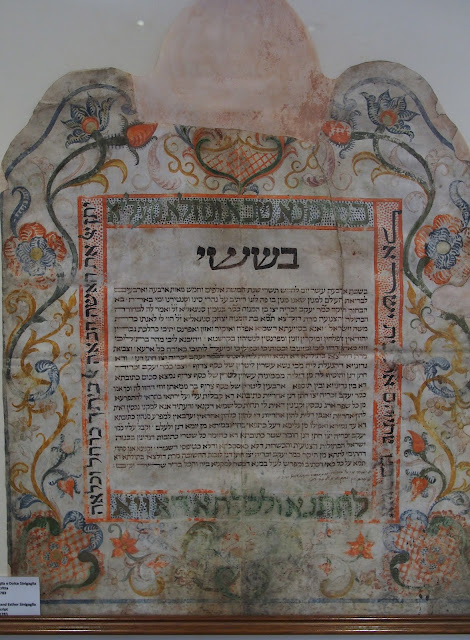Did you know that the word "ghetto" was first used to describe the area in Venice that the Jewish population was confined to from 1516 and until 1797 when Napoleon allowed the Jews to move freely about the city? The word "ghèto" was Venetian for foundries, and the "g" is actually silent or soft. It is believed the Ashkenazi Jews, immigrating from Germany and Eastern Europe, added the hard "g," which is the way "ghetto" is pronounced today. During this time, the Venetian Jews were segregated and discriminated for their religion and origin. For example, all Jews were required to wear yellow hats so that they could be distinguished from the non-jews during this time. By the time Napoleon liberated them, they were an integral part of Venetian society, yet were confined to a tiny area. In fact, many Jews practiced medicine (and were some of the best in Venice/Italy), and were allowed to lend money, and run pawn shops. Sadly, it was not until 1870 that the Jews were emancipated and considered full citizens with equal rights in Italy. Even though they were confined to a very small area, the Venetian Jews built sky-rises (over 6 stories tall) to accommodate their growing population during the 1600s. This area is still intact and home to the current, but very small (less than 800 people), Venetian Jewish population today.
On our last day in Venice on Sunday, Michael and I visited the Jewish Ghetto of Venice and decided to take the synagogue tour offered by the Jewish Museum (website here). It was a really interesting hour long tour of the 3 of the 4 accessible synagogues in the Ghetto. We would recommend the tour to anyone who is interested in these sorts of things. Below are some of the photos from the tour. Unfortunately, we were prohibited from taking photos inside of the synagogues, but you can view photos of the other synagogues online if you search Venetian Synagogues on google (or any search engine of your choice).








No comments:
Post a Comment